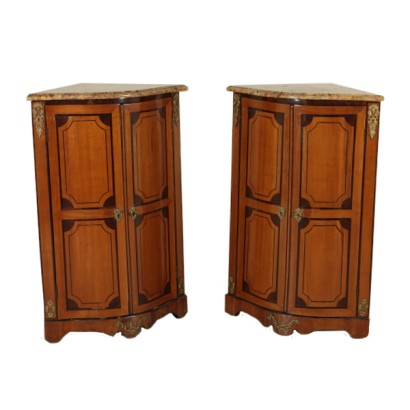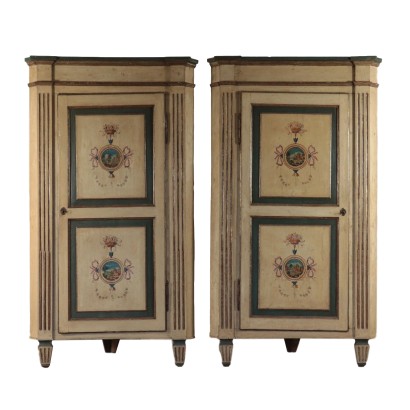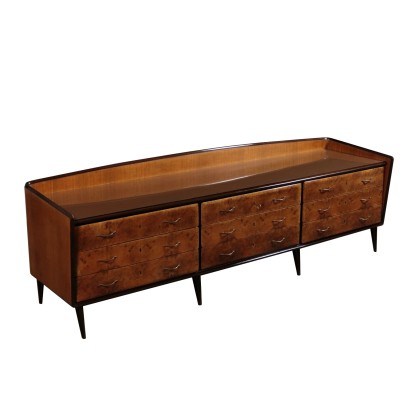Pair of Corner Cabinets Rosewood Manufactured in France 18th Century
Features
Style: Louis XVI (1774-1792)
Age: 18th Century / 1701 - 1800
Origin: France
Main essence: Rosewood
Material: Lemon Tree Veneer , Rosewood Veneer
Description
A pair of stamped corner cabinets, two doors, serpentine front. Citronnier and rosewood veneer. Inlaid on the front with rosewood threads and gilded bronzes on the uprights and the basement. Tops made of breccia and bracket feet. Fir wood interiors. Both the corner cabinets have a stamping under the top: M. Criaerd. Manufactured in France, 18th century.
Product Condition:
The item shows signs of wear due to age. Any damage or loss is displayed as completely as possible in the pictures. It may require restoration and polishing.
Dimensions (cm):
Height: 108
Width: 73
Depth: 32
Certificate issued by: Dott. Cuoccio Vittorio
Additional Information
Notes historical bibliographic
The stamps shall be used by the Parisian shop 70 years from Mathieu Criaerd and son; in those years can be attributed to the two corner cupboards, evidently influenced by Louis XVI taste. News are found on: Comte de Salverte, Les production du XVIII siecle, ed. 1975, p F.DE NOBLE Paris. 76-77Style: Louis XVI (1774-1792)
The Louis XVI style precedes by many years the coming to the throne of the sovereign from which the name derives.The renewed prevalence of the composure of geometric shapes that characterize the furniture of the neoclassical era, is welcomed as an antidote to the freer and more capricious formulations imposed by the Rococo dictates.
The artist's imagination works free interpretations derived from examples of the Greek-Roman, Etruscan or Egyptian world, from which only the architectural metrics are re-proposed with strict observance.
In this sense, it should be noted that only starting from the 1970s and 1980s in cabinet making did we witness the sunset of the pictorial flowering in inlay, in favor of models with a prevalence of geometric ornamentation.
Therefore, furniture characterized by extreme elegance and virile austerity matures.
In Italy, the Louis XVI style finds natural diffusion.
The furniture tends in the norm since the Sixties-Seventies to adopt a linear structure with a strong presence of decorations.
The use of light brown-colored woods is preferred, such as cherry.
The Italian Louis XVI will always remain linked to the production of furnishing accessories specifically oriented to the inlay typology.
These are furniture of well-proportioned dimensions, supported by the characteristic truncated conical pyramid legs, dressed in the mirrors of the top, sides and panels centered by elegant geometric decorations.



























